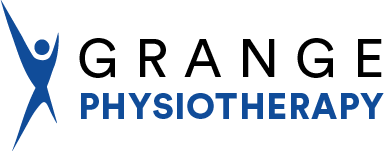How Physios Treat Vertigo
Have you experienced vertigo, nausea, vomiting, or balance issues during or immediately after moving your head position? You may be experiencing Benign Paroxysmal Positional Vertigo (or BPPV), which is the most common cause of vertigo symptoms.
This inner ear condition can make you feel sudden, brief and intense dizziness, and can often be successfully treated by a Physiotherapist.
What does BPPV feel like?
Vertigo can be a symptom of BPPV, as well as:
- Nausea
- Vomiting
- Balance problems
- Nystagmus (uncontrolled flickering of eyes)
- Neck stiffness or pain
You might notice these symptoms after:
- Rolling over in bed
- Getting into or out of bed
- Bending over
- Looking up and down
- Turning your head side to side
These symptoms usually only occur when you change your head position, and they usually last less than a minute. If you are perfectly still and continuing to experience symptoms, you may not have BPPV.
What is BPPV?
The vestibular system is made up of structures located within each inner ear, which create the sensation of being upright or balanced. Our balance system requires this to function in coordination with our vision and joint positioning.
BPPV occurs when the microscopic fragments that float in inner ear fluid dislodge. If these fragments remain in their normal ear canal there is no problem. The problem occurs if a fragment gets into another ear canal where it doesn’t belong. This can affect your balance and spatial awareness.
There is no definitive cause for BPPV, and it is unknown why the fragments dislodge from their normal ear canal. BPPV commonly affects women more often than men, and those over 40 years old.
Vestibular rehabilitation:
When our balance systems are not functioning well, we can experience feelings of dizziness. Dizziness can cause a variety of sensations and symptoms: feelings of spinning (vertigo) or off balance, nausea, fatigue, and loss of normal vision. It can also cause secondary neck stiffness, fear or lack of movement and possible headaches.
Why see a Physio for an inner ear issue?
Most people think that due to the sudden onset and intermittent nature of the symptoms and episodes, along with how unsettling BPPV can feel, they should go straight to their GP or even present to emergency.
While this may be the case in extreme circumstances, many episodes of BPPV can be successfully treated by a Physiotherapist. Unfortunately not many people realise that Physiotherapists can treat much more than muscle injuries or sore body parts, and often rely purely on medication to treat the symptoms of BPPV.
A Physiotherapist with additional training and expertise in this area can treat BPPV because they are trained in teaching a series of movements which will drain the microscopic fragments back into the correct place. Physios who are trained in BPPV can tell which canal the fragments are in, and can therefor prescribe the correct series of movements to assist with the drainage.
Your physiotherapist can assist in determining the cause of your dizziness and treat it appropriately.
Common causes of dizziness can occur due to any of the following:
– Benign Paroxysmal Positional Vertigo (BPPV)
– Labyrinthitis
– Vestibular Neuritis
– Meniere’s Disease
These symptoms can also appear in more serious conditions such as:
– Low/ High blood pressure
– Stroke
Vestibular Rehabilitation Treatment:
After a comprehensive assessment of your vestibular systems, neck, posture and eye & head coordination, your physiotherapist will determine which treatments are most appropriate. They may also use pre & post assessment questionnaires to determine the frequency, severity and nature of your symptoms. These can help to establish the mechanism of your problem and optimize your treatment plan.
Your treatment plan will be customised to your particular symptoms in order for your brain and central nervous system to retrain the way signals are recognised and processed from the systems of visions, vestibular organs and joint proprioception. Treatment may involve manoeuvres of your head by the therapist if the vestibular system is involved. You will be given specific home exercises to improve your vertigo symptoms as well as balance and eye coordination. These exercises will desensitize your balance system and give you more ease and confidence with movement. As you improve, you will be given progressively harder exercises to challenge you brain. Your therapist will identify if you need further treatment for stiff neck muscles and joints to optimise your system and maintain better spinal health.
Need help?
If you’d like to see one of our Physiotherapists, you can:
- Call us on 9592 2059
- Use our Online Booking Gateway (available 24/7) to choose your appointment time
- Drop in to see us in person
- Email us on admin@grangephysiotherapy.com.au

